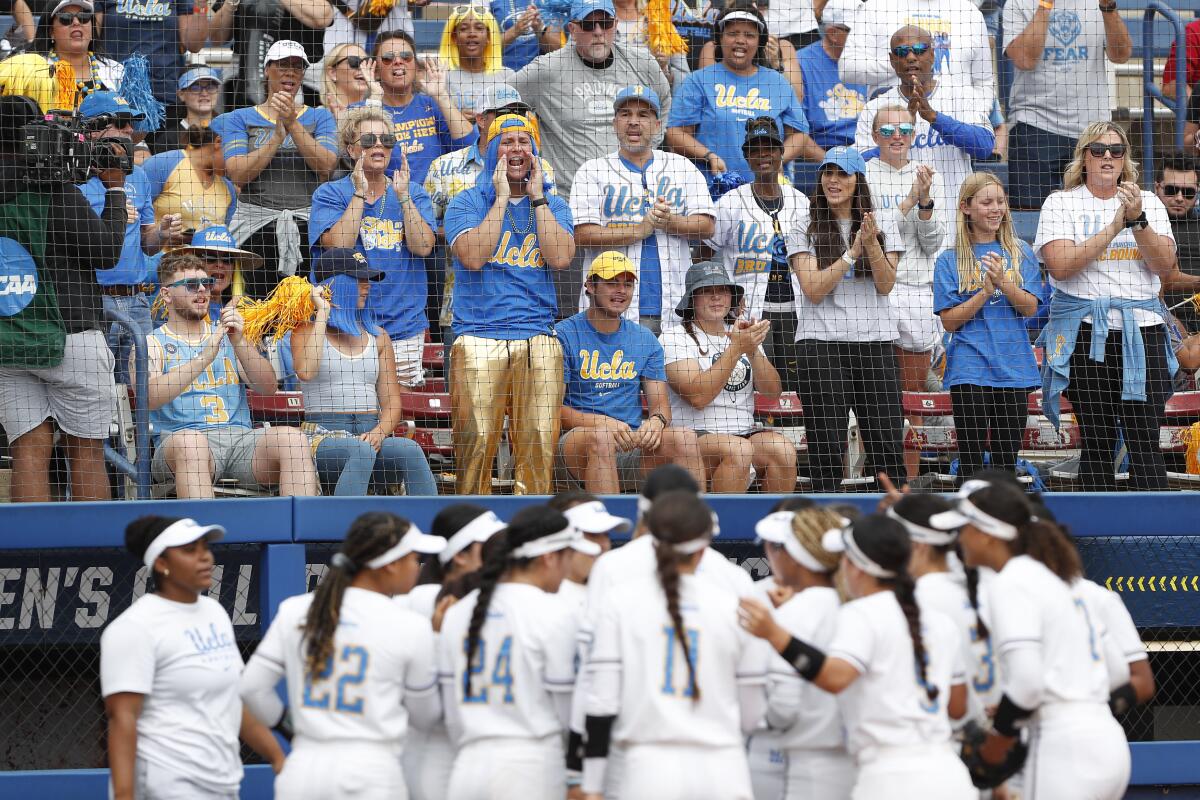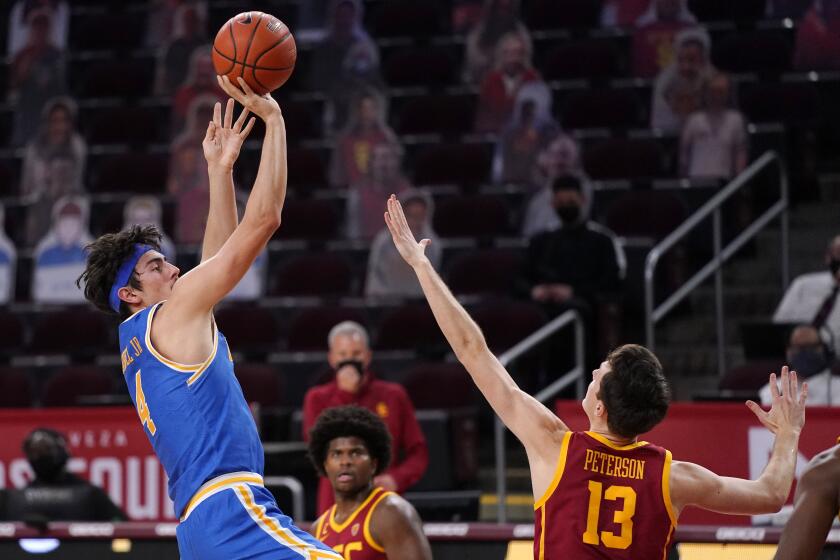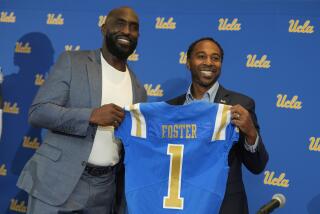UCLA Olympic sports faced uncertain future until the Bruins jumped to the Big Ten

- Share via
It was a splashy move with a quiet beneficiary.
Given its perilous athletic department finances, UCLA faced the prospect of cutting sports had the school not agreed to bolt for the Big Ten Conference.
The timing isn’t certain and the number of teams that would have been affected isn’t known, but the Bruins were headed toward an Olympic sports Armageddon without the infusion of cash that will accompany its departure from the Pac-12 Conference in 2024.
Now its 25 teams and more than 700 athletes can exhale knowing that their futures have been secured, making those cross-country flights and frigid midwinter temperatures in Big Ten country far more bearable.
“If you love Olympic sports, you should be a fan of this move,” UCLA athletic director Martin Jarmond told The Times on Tuesday. “When your program is in significant debt, it’s difficult just to maintain, never mind to invest. This not only preserves the programs now — which was not a given — but also will allow us to invest in them. This move allows us to reimagine what UCLA athletics can be with more strategic investment and resources.”
Over the last three fiscal years, UCLA’s athletic department had run up a $102.8-million deficit that figured only to worsen given the school’s sagging football attendance and paltry Pac-12 payouts that lagged behind its major conference counterparts. Now it’s conceivable that the Bruins could receive $100 million from the Big Ten per year if the expanded conference can snag the projected $1-billion media rights deal that’s set to begin in 2024.
The financial boon awaiting UCLA with the Big Ten, coupled with its athletes playing on a more visible stage, spurred the decision to leave the Pac-12.
In the span of one or two years, UCLA’s deficit could become a surplus, its budget worries as much a relic as the Bruins residing in the Pac-12 South.
Those immediate riches should stave off the sort of crisis that Stanford found itself in two years ago, when it announced it was cutting 11 sports because of budgetary constraints. A year later, amid a backlash of lawsuits and athlete angst, the school reversed course and kept its athletic department intact.
Lacking similar salvation, others weren’t as fortunate. More than 30 colleges nationwide have shed sports in the last 2½ years, citing fiscal hardships created mostly by the COVID-19 pandemic.
UCLA won’t join that list thanks to its new benefactor, eliminating cutback worries. The increased resources will provide, among other things, more money for facilities, travel and coaches’ salaries, even among the four programs — beach volleyball, men’s volleyball, and men’s and women’s water polo — that will not be making the move to the Big Ten because the conference doesn’t sponsor those sports.
“I constantly think about, how do we get No. 120?” Jarmond said, referring to UCLA’s quest for its next NCAA team title. “How do we not only get to the Final Four, but win it all? How do we help the programs win and win big in this changing environment? These days, you have to be constantly increasing your resources to help coaches and student-athletes reach those goals and to stay competitive as a department.
Here’s a comparison of recent Pac-12 and Big Ten revenue, illustrating what USC and UCLA will receive by switching conferences.
“We want to bring more excitement and energy to our teams. We want more exciting games in the Rose Bowl, more fun in Pauley Pavilion. I think about, how do we help softball not only continue to get to the College World Series but to win it all again? Our student-athletes deserve an elite experience, and this move will play a significant role in our ability to provide that for them.”
Giving them a chance simply to compete may have been the greatest gift of all.
More to Read
Go beyond the scoreboard
Get the latest on L.A.'s teams in the daily Sports Report newsletter.
You may occasionally receive promotional content from the Los Angeles Times.









